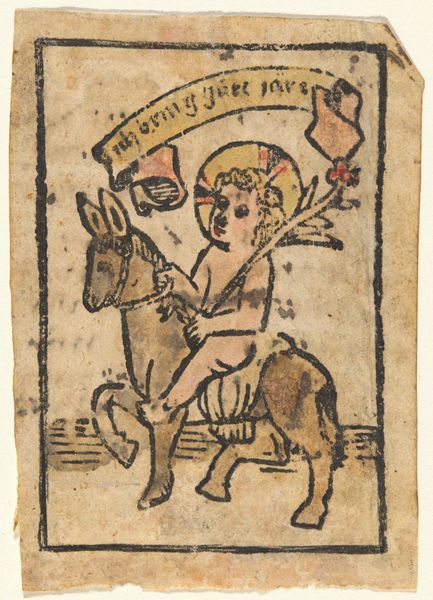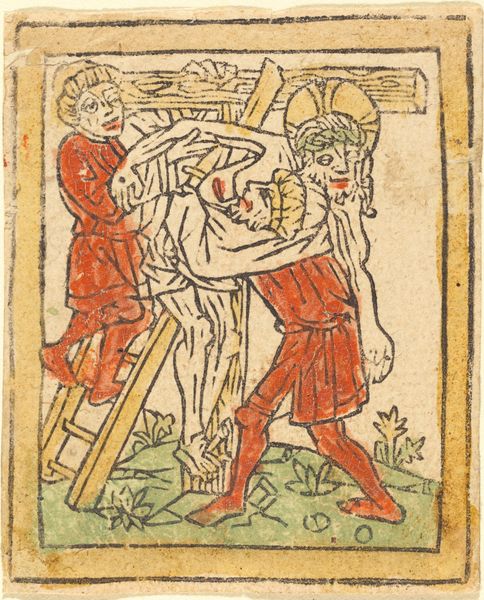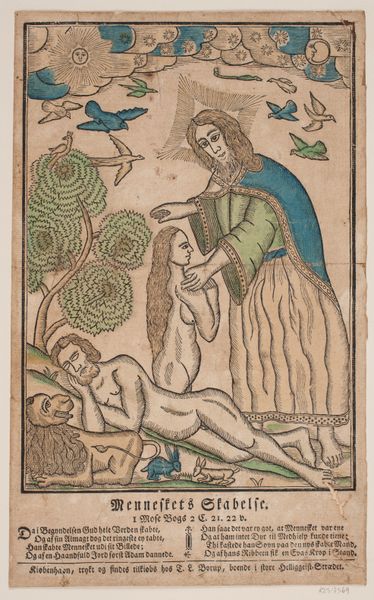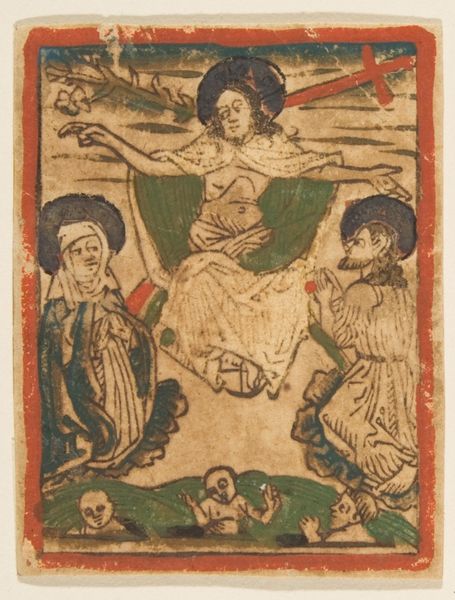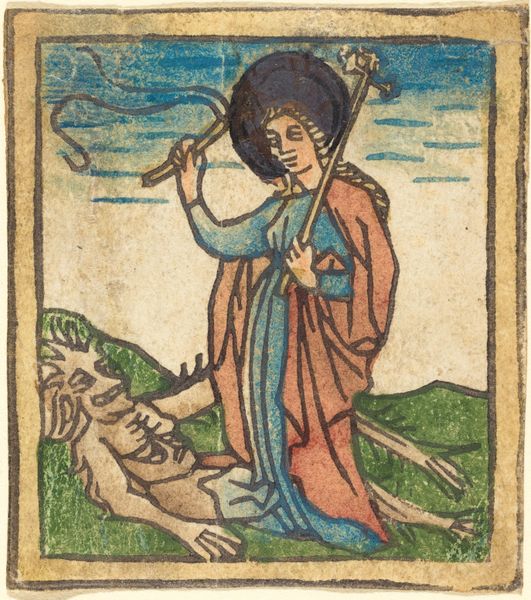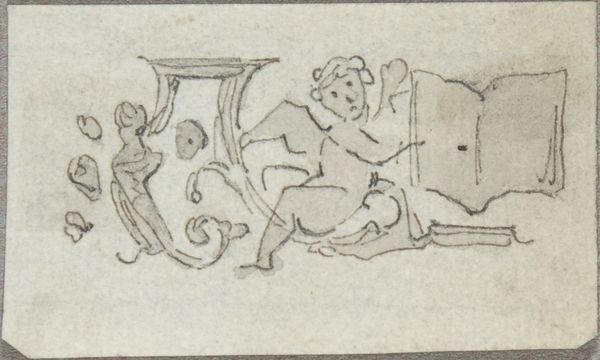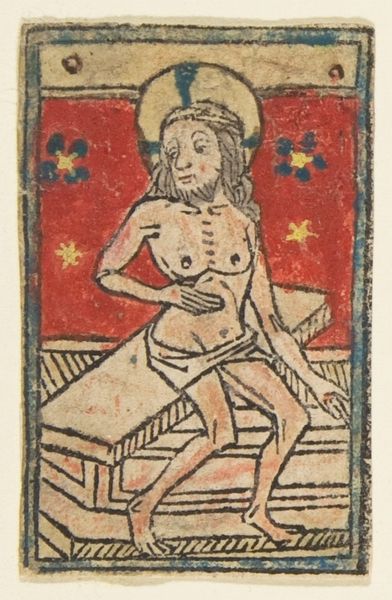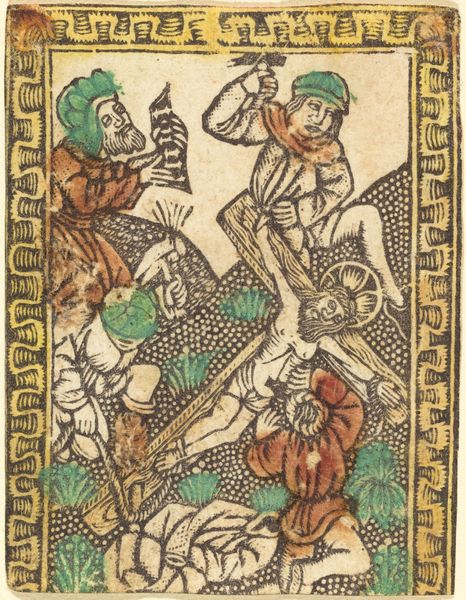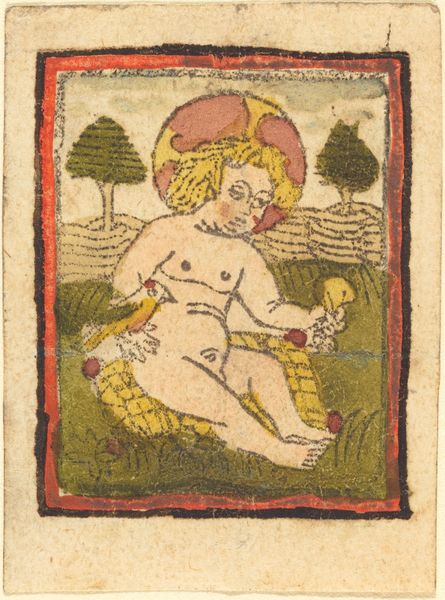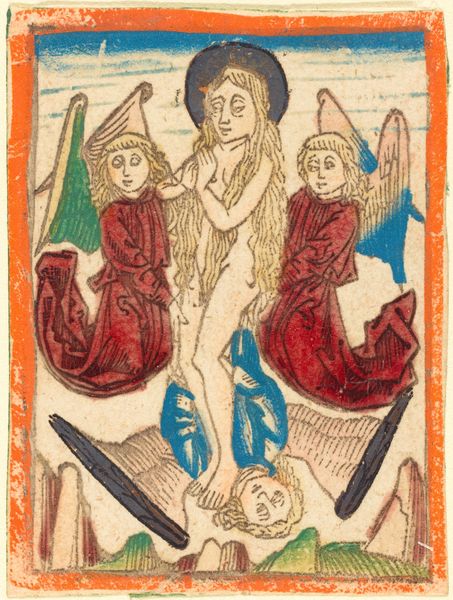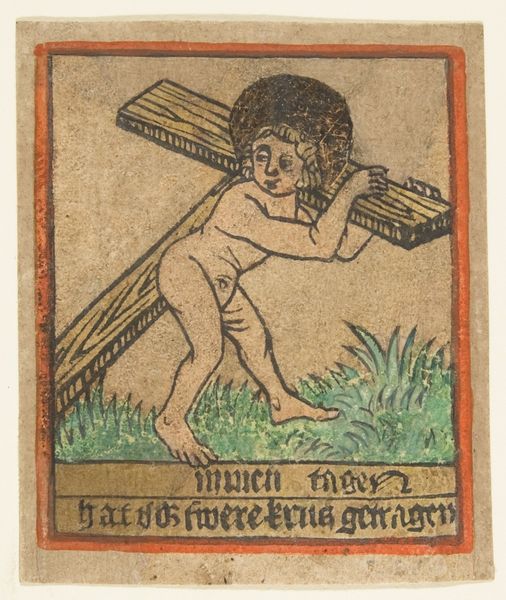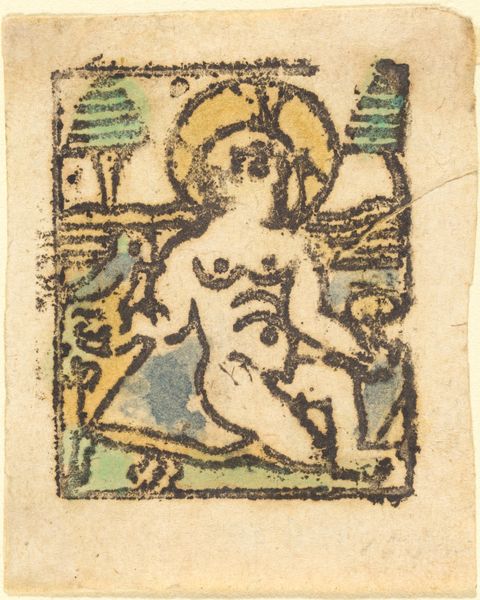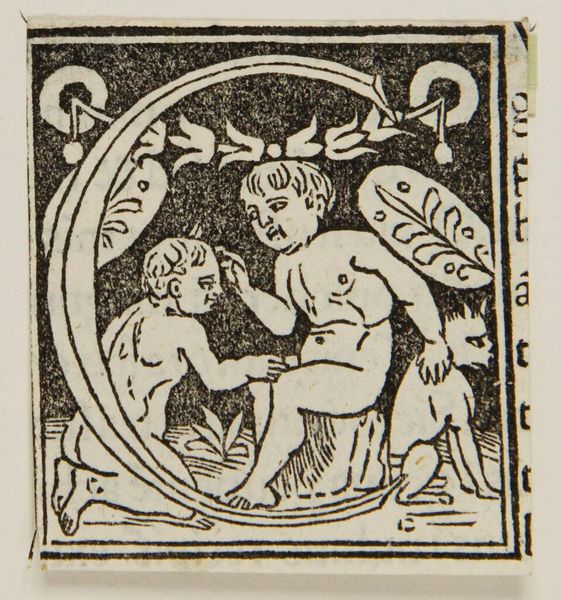
Saint Achatius, from "Christ and Saints" 1500 - 1540
0:00
0:00
drawing, print, ink, woodcut
#
drawing
#
narrative-art
#
ink painting
# print
#
figuration
#
ink
#
linocut print
#
woodcut
#
northern-renaissance
#
christ
Dimensions: Sheet: 1 1/4 × 1 5/16 in. (3.2 × 3.3 cm)
Copyright: Public Domain
Curator: Albrecht Altdorfer, a major figure in the German Renaissance, likely produced this woodcut depicting Saint Achatius between 1500 and 1540. Editor: My initial reaction is one of brutal, visceral intensity. The composition, enclosed in that tight circular frame, amplifies the saint’s suffering. It's a surprisingly raw image for the period, wouldn’t you say? Curator: The print's power certainly stems from the artist's strategic use of line. Notice how the thick, almost crude, black lines define the figures, emphasizing their agony. There's a deliberate flattening of space; Altdorfer isn't concerned with perfect anatomical rendering but with conveying intense emotion. Editor: It’s more than just emotion, it's a statement. These small devotional woodcuts, widely circulated, functioned as accessible symbols of faith, particularly during periods of religious and social upheaval. The stark imagery, therefore, had a didactic purpose, reinforcing piety and adherence to Christian values amidst the brewing Reformation. Curator: Good point. Altdorfer’s choice to focus on Saint Achatius, traditionally the leader of the Ten Thousand Martyrs, could reflect a yearning for steadfast faith amid increasing uncertainty. I’d be interested in delving into the compositional elements though: observe the symbolic halo, an unbroken circle, is sharply juxtaposed to the aggressive angularity of the spears... Editor: A poignant visual contrast. And given Altdorfer's political engagements as a town councilman in Regensburg, one wonders if these representations served a dual purpose—spiritual reflection and social commentary on violence or war. Curator: His command over what some might dismiss as primitive printmaking reveals a refined sensibility when one analyzes line weights and the color choices and contrasts. Editor: Perhaps through such images, religious dogma becomes deeply rooted. It solidifies its presence, reaching wider demographics. Curator: Indeed. A compact masterwork from a critical historical crossroads! Editor: Altdorfer leaves one with many compelling arguments about the public purpose of accessible faith art.
Comments
No comments
Be the first to comment and join the conversation on the ultimate creative platform.
